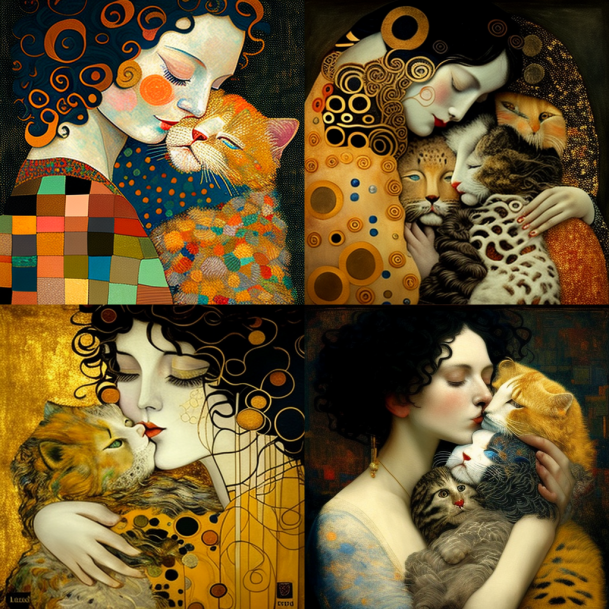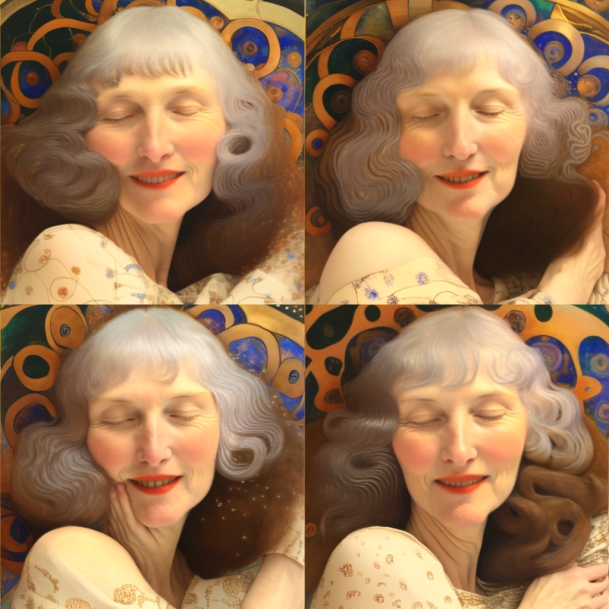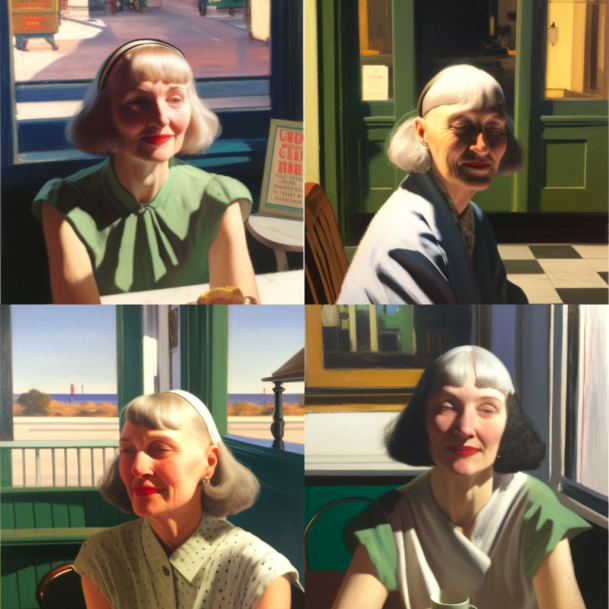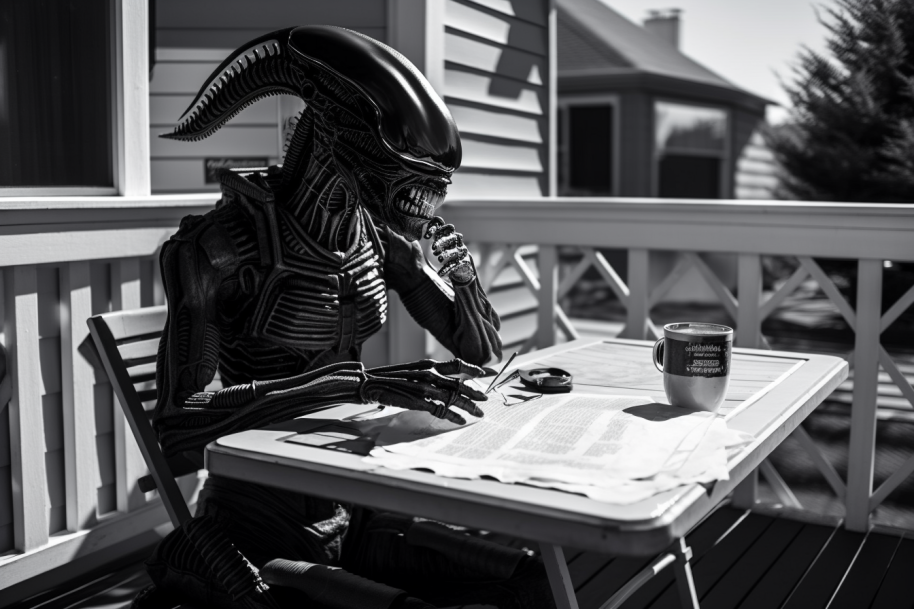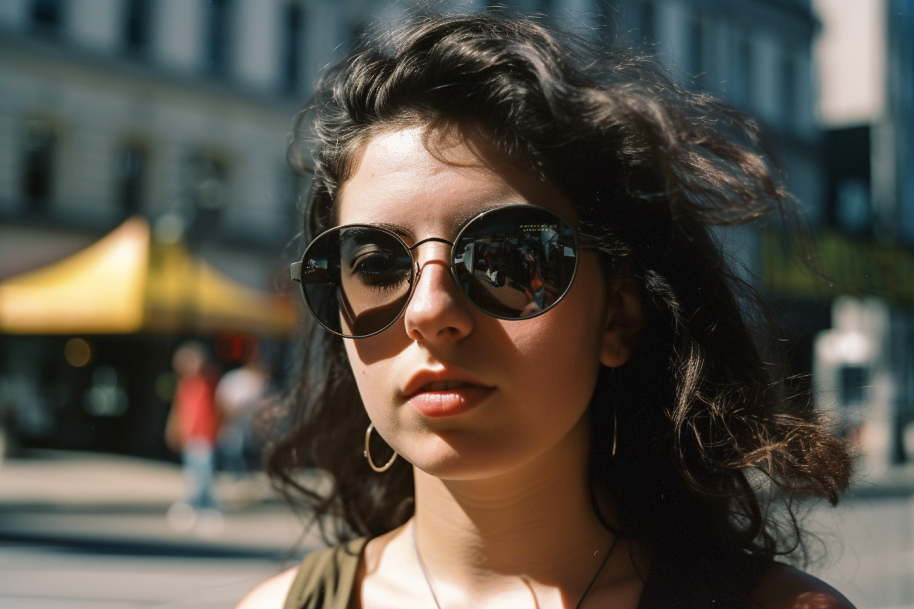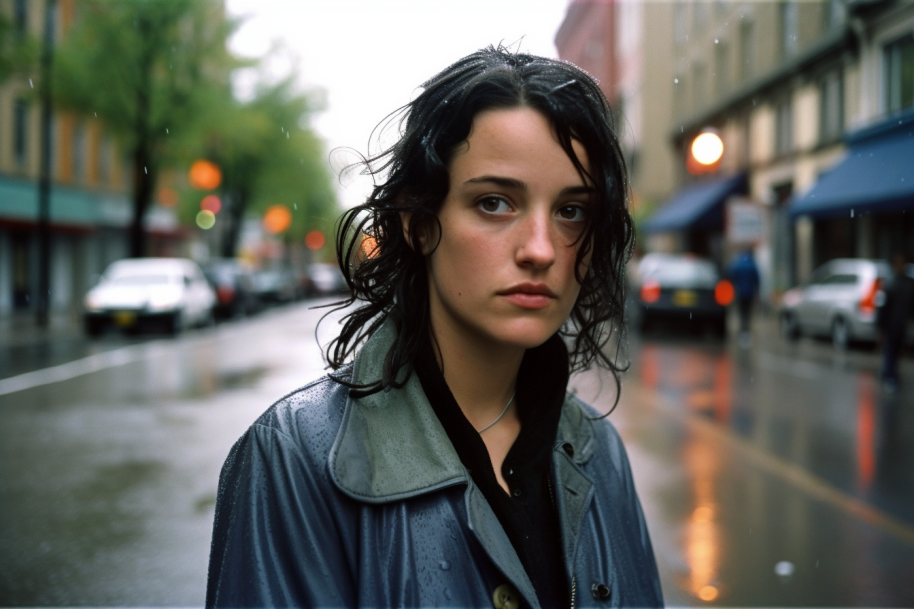Picturing poetry
When students are introduced to poetry, they tend to picture the text in a straightforward way. When I was teaching poetry, I would often start the semester by showing an abstract painting to the students: a painting by Riopelle for example. I would ask them to read into the painting, which was not easy. Since no one could provide a clear and direct interpretation, I would ask each and every student, while taking attendance, to say one word inspired by the painting. By combining all the ideas, we could formulate a hypothesis on the meaning of the painting. It would allow me to draw a parallel between abstraction in painting and abstraction in poetry.
The advent of Midjourney gave me the idea to go the opposite way. When some verses are too complex or some poetic images are not clear for the students, Midjourney can provide a visual representation. I tested the idea by translating poems by Quebec writers using Google Translate and submitting them to Midjourney. I was pleasantly surprised by the results!
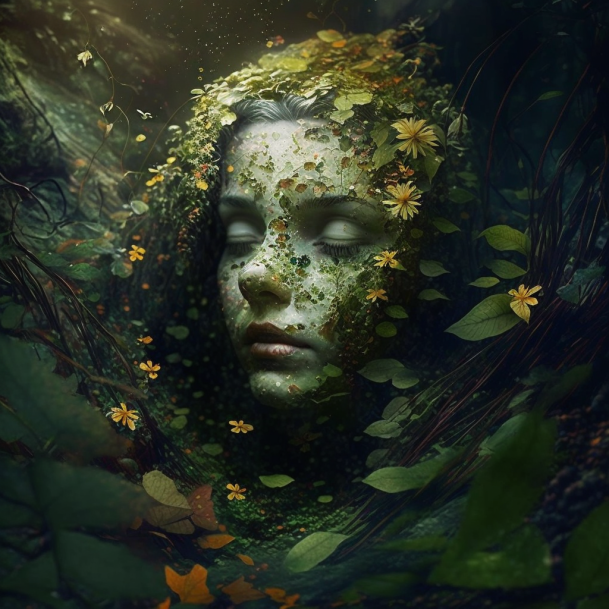
Illustration from an excerpt of La marche à l’amour by Gaston Miron (in French):
“tu viendras tout ensoleillée d’existence
la bouche envahie par la fraîcheur des herbes
le corps mûri par les jardins oubliés
où tes seins sont devenus des envoûtements”
English version submitted to Midjourney, translated by Google Translate:
“Your exitence will live all sunny
The month invaded by the freshness of the herbs
The body matured by the forgotten gardens
Where your breasts have become spells”

Illustration from an except of Mon bel amour by Gaston Miron (in French):
“l’oreille comme un coquillage
dans quel pays du son bleu
amour émoi dans l’octave du don”
English version submitted to Midjourney, translated by Google Translate:
“the ear like a shell
In which country blue sound
Stirring love in the octave of the gift”
I especially liked the 2nd image, which made me realize that the F clef symbol has a shape similar to that of an ear, which I had never thought about before when reading this poem by Miron.
Picturing abstract concepts
In a Philosophy course, it could be an interesting exercise to ask the students to portray one of the concepts seen in class using an image (stoicism, humanism, or the notion of paradox for example).
Conversely, you could create an image yourself. Present it to the students and ask them to evaluate if the concept is well portrayed or not, and to interpret the different symbols found in the image. Why not organize a debate?
I tried to put it into practice by using Midjourney to illustrate existentialism. After a few tests, I decided to take it further: I asked ChatGPT to give me the prompt to submit to Midjourney.
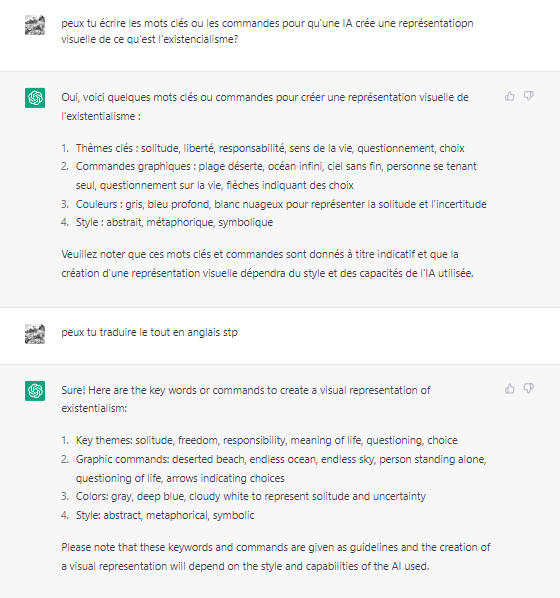
I asked ChatGPT keywords and commands that I could later submit to Midjourney to create an illustration on existentialism. I requested them in French and then, had ChatGPT translate them.
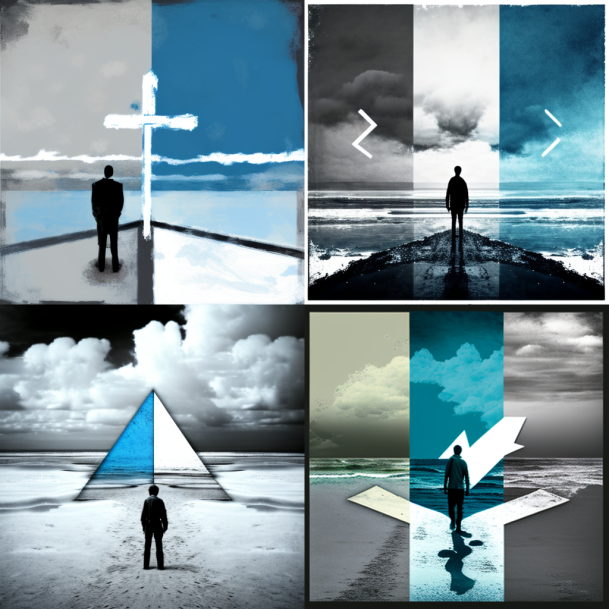
The 4 images provided by Midjourney from the written description of existentialism by ChatGPT.
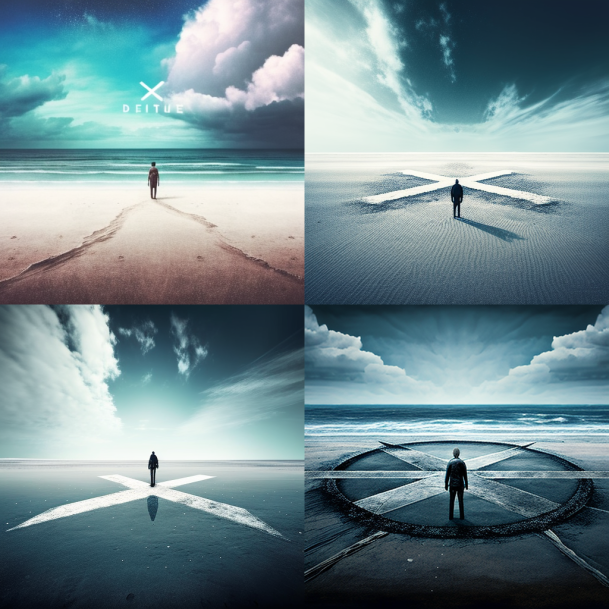
The 4 images provided by Midjourney from the theme descriptions and graphic commands suggested by ChatGPT.
I did the exercise again with the concept of sophism, then with the philosophy of Nietzsche.
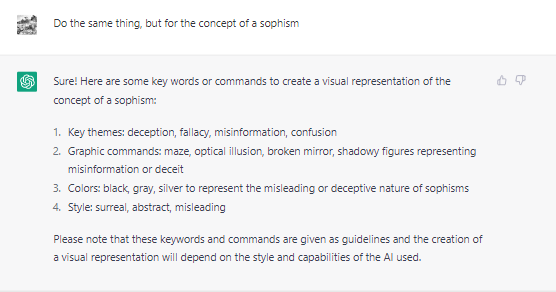
I asked ChatGPT for written indications that I could later submit to Midjourney to create an illustration of the concept of sophism.
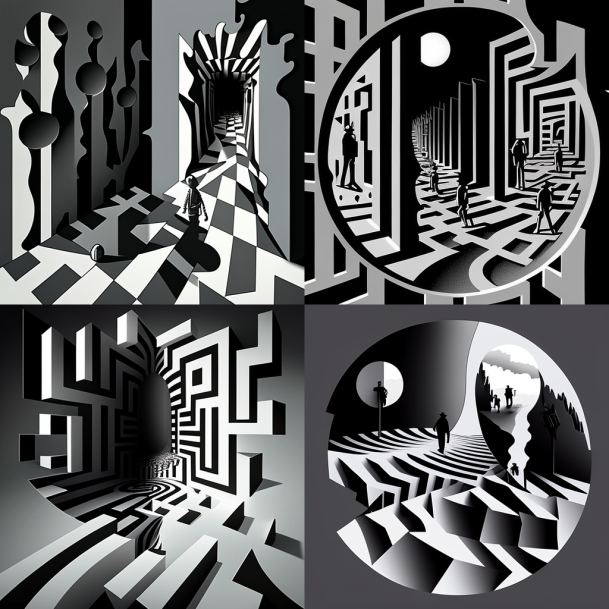
The 4 images provided by Midjourney from the written description of sophism written by ChatGPT.
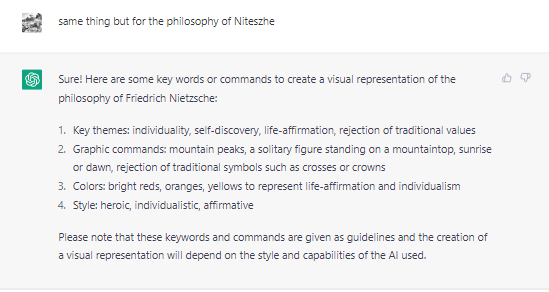
I asked ChatGPT for written indications, that I could later submit to Midjourney to create an illustration of the philosophy of Nietzsche.
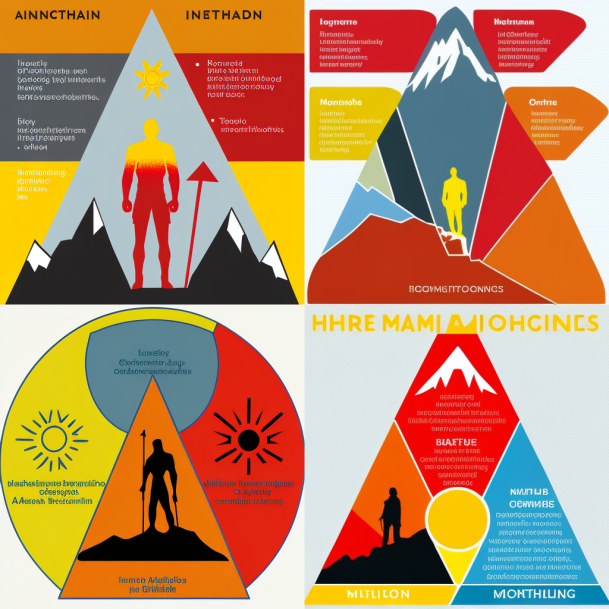
The 4 images provided by Midjourney from a description of the philosophy of Nietzsche written by ChatGPT.
I believe these results to be extremely interesting! Pedagogically, it seems quite valuable to ask the student for example: “Why does AI associate existentialism with a person alone on a beach?” or “Why is the philosophy of Nietzsche depicted by a man alone on a mountain top?”.
There is certainly food for thought, and learning!
Creating a poster to analyze a novel
In the course Film & New Media that I was giving in French at the Collège Marianopolis, the students were reading a novel that would be adapted or has already been adapted for the cinema (such as Royal from Jean-Philippe Baril Guérard or The Goddess of Fireflies by Geneviève Pettersen). As a task of analysis, I would tell them to create a poster for the film adaptation of the novel. I would ask them to put the emphasis on one component from their reading: what the student would show on their poster had to represent what they would see as important to remember from their reading. There was a whole reflection process on what to show (characters from the novel, the themes discussed) and how to represent them. The substance and structure had a meaning: the text typography of the poster, and the colours; everything had to be carefully selected.
It was a valuable experience, but it was time-consuming. I had to take the students to the computer lab during a class to teach them how to use Photoshop. Then, I would invite a photographer to class to explain the basics of photography (the techniques, the compositions, etc.) so the students could successfully take pictures for their poster. At the end of the project, I would meet each team acting as the film director. I would question the students on their poster to validate their work of analysis and interpretation.
The reflection is quite interesting, but this assignment required some basic knowledge from the students to create an appealing poster. To avoid penalizing the less talented students in that area, I asked them to write a text presenting their intentions, allowing me to evaluate them properly when the poster was less successful on the technical side.
With Midjourney, restrictions related to the mastery of the tools become easier. I could use only one class to ask the students to explore Midjourney and decide on what they what to include on their poster: choosing the components to represent, choosing a style. The students could also present a poster without having to master the tools that were required before.
The use of Midjourney could save class time by implementing the project more quickly. However, my student liked being introduced to photography and learning how to use Photoshop. One option would have been to keep these parts of the course, but still begin by using Midjourney to create a mood board. The students could thus test and specify their film poster concept. They could test different styles, before taking the pictures and editing them in Photoshop.


